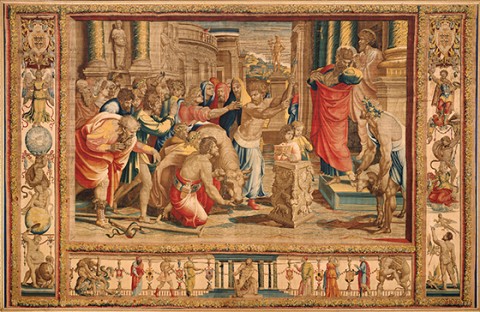The Sacrifice at Lystra, by Raphael (Raffaello Sanzio) (1483–1520)

As the newly elected Pope Leo X, Giovanni de’ Medici chose Raphael to design wall coverings for his private chapel, the Sistine. The ten tapestries, woven in Brussels from cartoons made by Raphael, were to hang beneath the frescoes commissioned by Pope Sixtus IV in the early 1480s. Few visitors to the Sistine Chapel today realize that the chapel’s decoration is incomplete without the tapestries. Those narrating Paul’s life were located beneath the painted life of Moses and were put up only on special occasions. The Sacrifice at Lystra illustrates the story told in Acts 14. Paul has just commanded a man who had been unable to walk from birth to stand up. Upon seeing the man rise, the frenzied crowd, along with a priest of Zeus who brought oxen to the gates, wants to offer a sacrifice to Paul and Barnabas. Paul responds by denying that he and Barnabas are divine and by offering his first sermon, presenting the gospel to gentiles.





